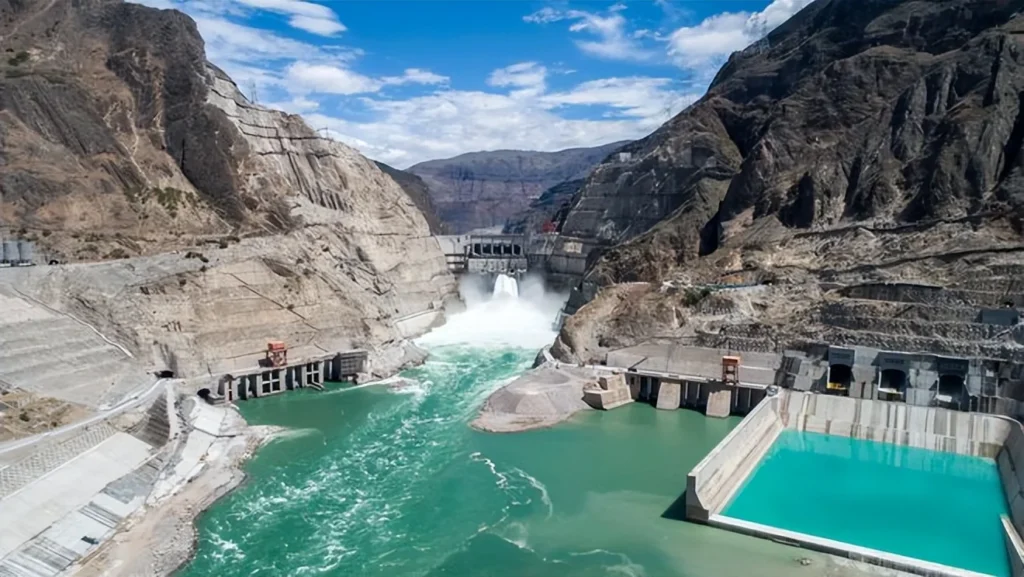CONTENT

By: Ashley Dudarenok
Updated:
China’s capacity for mega projects continues to reshape its economic landscape and technological frontier in 2026 and beyond. From record-breaking infrastructure feats to cutting-edge tech initiatives, these projects are not just grand in scale – they carry strategic significance. In this comprehensive overview, we explore the most significant China mega projects across transportation, urban development, energy, digital technology, aerospace, and global infrastructure.

China’s rapid development of transportation infrastructure continues at an unprecedented scale, integrating regions and slashing travel times. These China mega projects are reducing logistics costs, connecting economic hubs, and enabling new business opportunities. In 2025, the country is shifting from pure expansion to emphasizing quality and innovation in transport projects.
China’s high-speed rail (HSR) network has entered a new era of strategic expansion, technological innovation, and economic recalibration. As of late 2024, the network stretched to 48,000 km, representing approximately 70% of the global high-speed rail infrastructure. This is not merely a feat of national pride—HSR has become a core logistical and economic asset, connecting 97% of cities with populations over 500,000, thus transforming domestic mobility and regional commerce.
Between 2021 and 2024 alone, 10,000 km of new lines were added, with an emphasis on connecting less-developed regions to the national grid. A blend of policy priority, industrial scaling, and streamlined project approvals enabled this rapid growth.
Where the last decade focused on geographical expansion, 2025 marks a pivot toward speed and technological performance. China Railway is trialing the next-generation CR450 series, a high-speed train prototype designed for operating speeds of 400 km/h. In trial runs, the CR450 clocked 420 km/h, positioning China as the front-runner in ultra-high-speed rail technology.
Key performance upgrades in the pipeline include:
The target for 2035 is a 70,000 km HSR network built on an “eight vertical, eight horizontal” spine structure, with particular focus on interprovincial trunk lines and logistics corridors. Importantly, future lines are not just about reach—they are meant to strengthen network efficiency and cross-modal integration.
Beyond domestic use, China’s HSR is increasingly being positioned as an exportable infrastructure product and a tool of geopolitical engagement. What began with licensing foreign technologies in the 2000s has evolved into a self-sufficient, vertically integrated industry capable of turnkey solutions abroad.
Recent international deployments include:
These projects demonstrate HSR’s dual utility—as a domestic mobility backbone and a foreign policy asset. Chinese firms, such as CRRC and CREC, are now active bidders on global rail infrastructure tenders, often paired with financing from China Development Bank or the Export-Import Bank of China.
With ambition comes fiscal pressure. The China State Railway Group has accumulated debt estimated in the hundreds of billions of dollars, largely due to its aggressive network expansion over the past decade. Some lines remain underutilized, particularly in sparsely populated western regions, raising questions about long-term operating sustainability.
In response, the Ministry of Transport has shifted focus in 2025 toward:
This reorientation reflects an evolving understanding that “mileage metrics” are not enough—economic viability, passenger experience, and network utilization now define success.
Despite the challenges, market indicators remain strong. In the first half of 2025, China’s high-speed network carried a record 2.24 billion passengers, up 6.7% year-on-year. Load factors improved across core city pairs, such as Beijing–Shanghai, Chengdu–Chongqing, and Guangzhou–Shenzhen. This uptick reflects renewed travel demand following the COVID-19 pandemic and a rising consumer preference for fast, climate-friendly ground transport over short-haul flights.
From a business standpoint, these figures signal not only the resilience of HSR but its elevated role in national economic recovery and regional integration. For executives in logistics, real estate, and high-tech industries, proximity to HSR hubs is increasingly correlated with improved workforce mobility, faster supply chain speed, and higher investment potential.
The Greater Bay Area is home to several China mega projects, including the Shenzhen–Zhongshan Link and the Hong Kong–Zhuhai–Macau Bridge. Together, they are redefining connectivity, trade efficiency, and regional collaboration across southern China.
The most significant addition is the Shenzhen-Zhongshan Link, opened in June 2024. Spanning 24 kilometers, the project includes two suspension bridges, two manmade islands, and a submerged tunnel section. It was completed over seven years at a cost of:
This new link significantly enhances access between Shenzhen, a major tech hub, and Zhongshan, which offers industrial land and expansion capacity. Companies in Shenzhen are now establishing secondary facilities across the river while retaining operational control and workforce fluidity. The direct connection allows managerial and engineering staff to commute between facilities within half an hour, eliminating prior logistical inefficiencies.
The Shenzhen-Zhongshan project builds on the precedent set by the Hong Kong–Zhuhai–Macau Bridge (HZMB), completed in 2018 and currently the world’s longest bridge-tunnel system at 55 kilometers. Together, these two corridors form the spine of a GBA expressway network now exceeding 4,500 kilometers of operational roadways
These projects aren’t built solely for symbolic value—they serve clear regional development objectives. By eliminating natural barriers across the Pearl River, they integrate previously disconnected urban economies and facilitate coordinated land use across city clusters.
China’s engineering capacity has also expanded in parallel. The tunnel portion of the Shenzhen-Zhongshan Link used world-record diameter immersed elements, setting new global benchmarks in underwater construction. Planners are now exploring a Shenzhen–Hong Kong underwater rail tunnel, which would further reduce friction between the region’s densest commercial centers.
While China continues to develop long-span bridges and tunnels in other provinces—such as the Danyang–Kunshan Grand Bridge (164 kilometers) and the Gaoligong Tunnel (34.5 kilometers under construction)—the GBA stands out for its economic intent.
For executives, the key takeaways include:
These projects are not just connective infrastructure—they are strategic interventions guiding where capital, people, and productivity will move next. The GBA’s ambition to become a globally competitive urban region by 2035 rests heavily on the functionality of this new physical grid. For firms operating in logistics, manufacturing, or regional real estate, proximity to these corridors is increasingly defining their competitive advantage.
Urban transformation sits at the heart of China mega projects like Xiong’an New Area, where infrastructure, sustainability, and technology converge to create “cities of the future.” These developments embody how China is scaling innovation to reshape urban living.

Xiong’an New Area in Hebei province, 100 km southwest of Beijing, is China’s most significant new city project since Shenzhen. Announced in 2017, its purpose is to absorb non-capital functions from Beijing and serve as a national model for smart, sustainable urban development.
The city is planned to accommodate a population of 5 million by 2035, with completion driven by the centrally coordinated relocation of institutions, infrastructure-first planning, and targeted industrial clustering.
Between 2022 and 2024, Xiong’an began receiving major institutions from Beijing:
The government has incentivized staff relocation through talent cards, housing subsidies, and matched public services. Key industry focus areas include advanced R&D, telecom infrastructure, and public service outsourcing. The China Telecom Smart City Industrial Park is a flagship zone for digital infrastructure and governance platforms.
The city’s design prioritizes low-carbon transport, green space, and integrated data systems. Unlike previous top-down projects, initial occupancy is being driven by policy migration, not speculative real estate.
Environmental planning incorporates Baiyangdian Lake conservation, with protections for wetlands and biodiversity zones integrated into zoning laws.
Xiong’an offers state-backed land access, regulatory flexibility, and long-term policy consistency. For companies in construction, green energy, and ICT:
Xiong’an is also a launchpad for national standards on digital identity, urban carbon accounting, and distributed infrastructure.
Challenges include lagging private-sector relocation and incomplete population transfers. Many relocated professionals commute weekly while maintaining residences in Beijing. The organic industry is still in its early stages, and high capital expenditures mean return timelines extend beyond 2035.
Still, in 2025, Xiong’an has moved beyond concept. Institutional anchors are in place, infrastructure is functioning, and early-stage economic activity is underway. Unlike previous “ghost cities,” Xiong’an has demand—policy-driven, but real—and remains central to China’s national urban strategy.
As China pushes towards energy security and greener growth, it is undertaking some of the largest power infrastructure projects on the planet. These range from colossal hydroelectric dams in the mountains to vast arrays of solar panels in the deserts.
The dual aims are to meet China’s enormous power needs (projected to keep rising through 2030) and to pivot away from fossil fuels in line with carbon neutrality goals. However, the scale of these projects brings its own challenges – environmental, social, and geopolitical.

In July 2025, China began construction on what is set to become the world’s largest hydropower project—a cascade of five dams on the Yarlung Tsangpo River in Tibet. Located near Motuo County, the project takes advantage of a 2,000-meter altitude drop over a 50-kilometer canyon, making it one of the most energy-dense hydropower corridors globally.
The project is designed to generate 300 billion kWh annually, nearly triple the output of the Three Gorges Dam and equivalent to the United Kingdom’s yearly electricity consumption. Its core objective is to deliver clean energy to industrial centers in eastern China, rather than serving local demand.
Key figures:
The electricity will be transmitted east through ultra-high-voltage lines as part of China’s national “west-to-east” power transmission strategy.
The project is being developed under direct state supervision by China Yajiang Group, a newly established central SOE. It has been labeled a core component of China’s long-term energy security and decarbonization roadmap. Premier Li Qiang has called it a “project of the century” requiring simultaneous attention to output and ecological risk.
The announcement triggered a sharp rise in construction and infrastructure equities. Citi analysts estimate the project could add ¥120 billion annually to China’s GDP during the build phase.
High-demand sectors include:
The project aligns with China’s push for non-fossil energy dominance, though it diverges from global renewable norms by emphasizing centralized, capital-heavy engineering over distributed generation.
China is turning its northern deserts into high-output renewable energy zones. The national plan aims to install 253 GW of solar capacity across 7,000 km² of desert by 2030, primarily in the Gobi, Taklamakan, Inner Mongolia, and Ningxia. These projects are designed not only to supply electricity but also to stabilize sand and rehabilitate degraded land.
The Midong Solar Farm in Xinjiang became the world’s largest single-site solar project in June 2024. With 3.5 GW of capacity, 5.26 million panels, and a coverage area of 200,000 acres, it supplies power to approximately 3 million homes.
Built for $2.13 billion in under two years, it demonstrates that solar, when paired with storage and ultra-high-voltage (UHV) transmission, can meet baseload demand. Many desert solar farms are now integrated with long-distance transmission lines and battery storage.
In areas such as Ningxia and Inner Mongolia, agri-solar models are being implemented. Crops such as goji berries are planted beneath panels, which reduce soil evaporation and support plant growth.
The Kubuqi Desert’s “solar horse” farm, generating 2 billion kWh annually, also serves as a dune stabilizer. Satellite imagery confirms greening effects around large installations.
China leads in wind capacity and is expanding rapidly offshore. Inland provinces like Gansu and Inner Mongolia host large wind farms co-located with solar farms. A planned renewable energy complex in the Gobi aims to achieve a combined capacity of 455 GW by 2030.
UHV transmission corridors and grid-scale storage—such as pumped hydro, batteries, and experimental technologies—are being scaled to support intermittent supply.
In the first five months of 2025, China installed 198 GW of new solar capacity—more than the U.S. added in all of 2024. The Desert Renewable Energy Initiative is generating sustained demand for solar components, inverters, turbines, storage, and grid infrastructure.
It is also reshaping land use patterns and creating industrial opportunities around low-cost energy zones. For businesses, this is not just an energy project—it is an industrial platform built a national scale.

While the Tibetan cascade dominates headlines, China is completing another major hydropower project: the Shuangjiangkou Dam in Sichuan province. At 315 meters tall, it is set to become the world’s tallest dam, surpassing the Jinping-I dam by 10 meters—roughly the height of a 100-story building.
Located on the Dadu River, the ¥36 billion ($5 billion) dam is a rockfill structure with a concrete face, designed to endure seismic risks in one of China’s most earthquake-prone regions. In May 2025, reservoir filling began, and the first of its 3 GW-class hydropower units is expected to go online by year-end. Once operational, it will supply power to Sichuan and Chongqing, and link into China’s west-to-east transmission corridors.
Sichuan’s industries—particularly energy-intensive sectors like cryptocurrency mining and semiconductor fabrication—have faced power instability during droughts. Shuangjiangkou is expected to reduce such volatility by boosting the region’s base hydro capacity. It also supports flood control and water management downstream, addressing risks faced by cities along the Min and Dadu Rivers.
The project involved relocating villages and altering the river ecosystem. Fish populations and sediment transport are expected to be affected, though Chinese planners cite improved flood mitigation as a public benefit. Like many mega dams, Shuangjiangkou demonstrates China’s willingness to absorb social costs for infrastructure deemed strategically necessary.
Shuangjiangkou is part of a broader dam system on the Dadu/Min River. However, it may be among China’s last mega dams. The government has already pledged not to build new large dams on key stretches of the upper Yangtze and other ecologically sensitive rivers. Future renewable growth is shifting to solar, wind, and nuclear, as most of China’s viable large-scale hydro potential is now either utilized or restricted.
The dam’s completion reinforces China’s engineering capabilities and long-term infrastructure execution, marking a turning point. Shuangjiangkou is likely the final chapter in China’s era of large domestic dam building.
In tandem with physical infrastructure, China is executing mega-projects in the digital realm – constructing the backbone for the world’s largest digital economy. With the rise of AI, big data, and ubiquitous connectivity, the Chinese government and tech giants are investing heavily in network infrastructure and computing power on an unprecedented scale.
Key initiatives include nationwide 5G/6G networks, massive data center clusters, and experimental transport technologies like maglev trains. These projects might be less “concrete” than bridges or dams, but they are just as crucial for future growth and competitiveness.
Here is a streamlined, 300-word version of the “5G Ubiquity and 6G Ambitions” section, structured with clear subheadings and focused on core insights for executive readers:
In 2025, China had built the world’s most extensive 5G network, with over 4.39 million base stations—more than 60% of the global total—and a user penetration rate of 75–80%. Coverage now spans nearly all urban centers and many rural areas, creating a default environment of high-speed, low-latency wireless access.
5G is deeply embedded in China’s industrial upgrade strategy. Private networks support automated ports, smart factories, and logistics hubs, enabling seamless integration and efficient operation.
Remote-controlled cranes, real-time AI monitoring, and machine-to-machine communication are widely used. In 2024, mobile technologies contributed $1.2 trillion (6.2%) to GDP, projected to rise to $2 trillion (8.3%) by 2030—driven heavily by 5G adoption in manufacturing and logistics.
Chinese telecoms began rolling out 5G-Advanced (5.5G) in 2024, with over 300 pilot cities deploying upgraded capabilities. Meanwhile, national 6G development is moving rapidly.
The government has launched test satellites, funded core research and development, and prioritized standard-setting for commercialization by 2030. Expected features include terabit speeds, holographic communication, and integrated sensing.
China’s 5G leadership, spearheaded by firms such as Huawei and ZTE, has translated into significant global influence in telecom standards. With 6G, China aims to maintain its edge, investing heavily in spectrum research and next-generation hardware, including metamaterials and terahertz antennas.
China is rapidly expanding its data backbone to support artificial intelligence, cloud computing, and digital transformation. The “Eastern Data, Western Computing” strategy connects eastern demand hubs with western resource-rich regions through eight national data center clusters. Provinces such as Guizhou, Inner Mongolia, Gansu, and Ningxia now host large-scale facilities benefiting from cooler climates, renewable energy, and lower land costs.
By mid-2024, over ¥43.5 billion ($6.1 billion) had been invested in these projects. China’s total computing capacity reached 246 exaFLOPS, with a target of 300 exaFLOPS in 2025. Shanghai alone plans to build five new AI data centers, each exceeding 100 exaFLOPS. Guizhou, now dubbed “China’s Big Data Valley,” hosts Apple’s iCloud servers and Tencent’s hyperscale operations.
Rising AI workloads demand enormous GPU clusters and stable power. To meet this, China added 93 GW of new solar capacity in 2025, much of it dedicated to data infrastructure. Co-locating compute centers near renewable power sources is now a standard practice.
To handle heat and energy efficiency, operators are adopting liquid immersion cooling, undersea servers, and next-generation UHV transmission lines to move data and electricity efficiently across regions. Inland placement enhances network resilience and national data security.
Major players, including AliCloud, Tencent Cloud, and Huawei Cloud, are scaling rapidly despite export controls restricting the availability of high-end GPUs. Domestic chip initiatives and interlinked AI clusters are closing that gap. Together, these projects are shaping China’s foundation for large-scale AI, IoT, and future technologies such as quantum-secure communication, already in early pilot deployment across satellite and terrestrial networks.
China’s mega projects now extend into orbit and beyond. Over the past decade, it has established an independent presence in space, anchored by the Tiangong Space Station and a manned lunar landing program targeting 2030. These projects reflect both technological capability and strategic intent, positioning China as a global space power.

Completed in late 2022, the Tiangong Space Station (“Heavenly Palace”) consists of three modules—Tianhe, Wentian, and Mengtian—housing three astronauts on six-month rotations. It is now the only operational multi-module station besides the aging ISS.
Built after exclusion from the ISS partnership, Tiangong serves as a permanent laboratory for microgravity research, including fluid physics, astronomy, and materials science.
In 2025, Tiangong has become a hub for international cooperation. Experiments from European and developing nations have been accepted through UN partnerships, and future foreign astronaut visits are under discussion.
Plans include a space telescope (Xuntian) that can dock for maintenance and potentially an additional research module. The station’s existence secures China’s orbital foothold in the event of the ISS’s retirement, creating opportunities for commercial and scientific collaborations in low Earth orbit.
China’s crewed lunar mission is officially underway. The China Manned Space Agency aims to land astronauts on the Moon before 2030 using a new spacecraft, a lunar lander, and the Long March 10 rocket. Test missions are expected around 2027–2028.
Supporting this effort, the Chang’e-6, -7, and -8 probes are mapping the Moon’s south pole and testing surface technologies for a future International Lunar Research Station (ILRS). The program is driving advances in heavy-lift rocketry, lunar habitats, and extravehicular suits. If achieved, China would be the second nation to land humans on the Moon, reshaping global space dynamics.
For the industry, these initiatives open doors for aerospace supply chains, material research, and international payload collaborations. They also highlight a recurring theme in China’s mega projects—self-reliance and technological leapfrogging. When denied participation, China built its own path, turning exclusion into innovation.
China’s Belt and Road Initiative (BRI) remains one of the most ambitious infrastructure programs in history. Launched in 2013, it has evolved into a network of railways, ports, energy plants, and digital projects across Asia, Africa, Europe, and Latin America. Entering its second decade, BRI 2.0 reflects a more strategic, greener, and diversified approach rather than a slowdown.
In the first half of 2025, Chinese firms signed $66.2 billion in new construction contracts and invested $57.1 billion directly in BRI countries—about $124 billion in six months, nearly matching all of 2024. Cumulative engagement now exceeds $1.3 trillion, including $775 billion in construction and $533 billion in investments.
The focus is shifting toward renewable energy, digital connectivity, and critical minerals. Green energy deals hit $9.7 billion in early 2025, while oil and gas projects, such as a $20 billion complex in Nigeria, remain vital. Mining investments reached $25 billion, highlighting China’s pursuit of strategic resources.
Africa led BRI investment in early 2025 with $39 billion in deals, followed by rising engagement in Central Asia. Southeast Asia and the Middle East remain steady partners, while European participation has cooled, with Italy exiting in 2023. Meanwhile, Digital Silk Road and Health Silk Road projects—spanning telecom, smart cities, and medical cooperation—signal diversification.
For global companies, BRI 2.0 means partnership potential and competition. Opportunities exist in co-financing renewable energy, green finance, and sustainability services, as Chinese firms emphasize “high-quality, low-risk” projects. Yet, risks remain—political instability, regulatory hurdles, and project transparency issues.
Ultimately, BRI’s evolution underscores China’s enduring role as a global infrastructure orchestrator, with an influence that surpasses even the Marshall Plan’s scale in real terms.
From high-speed rails and hydropower dams to AI data hubs and orbital labs, China’s mega projects are redefining infrastructure for the 21st century. They merge economic necessity with strategic ambition—serving domestic modernization while expanding China’s global influence. For global executives, the lessons are both practical and profound.
China’s unmatched ability to mobilize capital, labor, and logistics has made scale and speed its defining edge. Projects that take decades elsewhere are completed in years, transforming markets and regional connectivity almost overnight. For companies, this demands agility—partners must adapt quickly or risk falling behind.
Unlike traditional builds, China’s infrastructure fuses digital and physical systems. High-speed rail networks utilize AI-driven scheduling, while smart cities like Xiong’an integrate real-time data. Additionally, drones and IoT sensors monitor energy grids. The next wave of infrastructure will likely blend civil engineering with AI, 5G, and cloud systems, reshaping what “infrastructure” even means.
Renewable mega-projects demonstrate that clean energy can scale without sacrificing growth. China’s massive solar and wind rollout has reduced global costs and accelerated decarbonization. Yet risks persist—environmental impacts, debt exposure, and uneven project returns remain challenges. Investors should carefully vet project fundamentals; not every build yields sustainable profits.
Through the Belt and Road Initiative (BRI), China has leveraged infrastructure to advance its diplomatic interests. New transport corridors and digital links are shifting global trade patterns and technical standards. Foreign firms can find opportunities in green finance, co-development, and tech partnerships, but must navigate complex regulatory and geopolitical landscapes.
Looking ahead, expect mega projects in semiconductors, EV infrastructure, genomics, and climate resilience—the next frontier of China’s modernization drive. These ventures align with its goal of becoming a “modern socialist power” by mid-century.
Ultimately, China’s mega projects form a living blueprint of ambition, efficiency, and adaptation. Whether viewed as competition or opportunity, they are reshaping the world’s economic and technological order—and the next phase is only beginning.
China’s mega projects are more than feats of engineering — they’re a mindset. They combine vision, speed, and integration across technology, governance, and capital. At ChoZan, we help global leaders and organizations translate that model into actionable frameworks for innovation, policy, and business transformation.
China’s ability to execute mega projects lies in the coordination between data, infrastructure, and human capital. That same coordination is what global companies now seek to emulate. ChoZan bridges that knowledge gap, helping you learn from and for China to future-proof your business.
Book a strategy session or request a custom briefing on China’s infrastructure and technology transformation. Follow founder Ashley Dudarenok for daily insights on China’s innovation and policy frontiers.
China’s engineering scale and rapid delivery are forcing a shift in global benchmarks. International contractors are now studying Chinese project management models—particularly those related to modular fabrication, high-speed rail design, and integrated digital monitoring. This has pushed the global industry toward stricter efficiency metrics, shorter delivery timelines, and broader use of prefabrication and AI-driven site management systems.
While state-owned enterprises dominate, private capital is becoming increasingly essential for niche segments such as logistics parks, renewable energy components, and smart-city technologies. Domestic insurance funds and tech conglomerates increasingly co-finance data centers and energy storage facilities. This hybrid funding model reduces fiscal pressure on the state while opening limited windows for institutional investors seeking predictable, long-term yields.
Yes. Technologies developed for domestic projects—such as high-capacity turbines, tunneling robots, and autonomous rail controls—are now being exported as goods. China licenses them abroad through infrastructure contracts or joint ventures. This accelerates the global diffusion of Chinese engineering standards and secures after-sales revenue in maintenance, spare parts, and digital system updates.
Environmental oversight has tightened since 2021. Major projects require integrated ecological audits, and newer builds—especially dams and highways—must include biodiversity offsets or water-resource balancing. Central ministries track metrics like forest replacement ratios and carbon intensity. Implementation remains uneven, but penalties for non-compliance and public reporting requirements are stronger than a decade ago.
Foreign firms rarely lead projects but can partner in specialized areas—energy storage technology, tunneling equipment, green materials, and project finance. Regulatory frameworks now allow limited foreign equity participation in public-private partnerships. Companies that offer advanced safety systems, low-carbon cement, or digital-twin software find growing demand from Chinese contractors upgrading to global ESG standards.
Communities benefit mainly through job creation, improved transport access, and new municipal services. Many western provinces see better education and healthcare reach as road and rail networks expand. However, benefits are uneven—urban peripheries gain faster than remote villages. The state increasingly ties project approvals to measurable social outcomes like school proximity or household electrification rates.
The biggest challenge is life-cycle management. High-speed rail and tunnel systems require continuous inspection, software upgrades, and specialized components. China is shifting from “build-and-expand” to “maintain-and-optimize,” emphasizing predictive maintenance powered by IoT sensors. Budgeting for long-term operations, not just construction, is becoming central to financial planning across ministries and provincial agencies.
AI tools handle route optimization, safety prediction, and materials scheduling, while construction robotics perform repetitive or hazardous tasks like welding or concrete pouring. This combination reduces accidents and cuts average project time by up to 20%. For global firms, China’s large-scale adoption provides a living laboratory for automation in complex civil works.
Inland provinces—once secondary—are now key growth frontiers. National programs encourage manufacturing relocation from coastal hubs to inland logistics zones connected by high-speed rail and UHV power lines. This rebalancing lowers costs and expands domestic demand. For investors, it means earlier access to untapped labor pools, cheaper industrial land, and supportive tax policies.
Projects now incorporate flood management, drought buffering, and seismic design standards. Urban drainage systems follow “sponge city” principles using permeable materials and smart sensors. In coastal regions, new seawalls and tidal barriers are combined with renewable-powered pumping stations. The government links climate resilience targets directly to project financing approvals and insurance eligibility.
China uses a layered governance model. Central ministries approve strategic categories, while provincial project offices handle execution. State-owned holding companies manage financing and coordination. Auditing is performed by the National Development and Reform Commission (NDRC) and the National Audit Office. Increasingly, blockchain-based systems are being piloted to track fund allocation and procurement transparency.
Academic partnerships are established early in the design process. Universities contribute to research and development in materials science, automation, and environmental modeling. In many cases, doctoral labs function as subcontracted innovation centers. For instance, civil-engineering faculties co-develop concrete composites or high-strength alloys that later become industry standards. This research-to-deployment cycle is shortening dramatically.
Mega project demand directly shapes global prices of steel, copper, cement, and rare-earth materials. When China ramps up large infrastructure cycles, global supply chains tighten, influencing export-dependent economies in Australia, Chile, and Indonesia. Conversely, when domestic approvals slow, global commodity prices often ease within months, revealing China’s outsized leverage on materials markets.
China is commercializing next-generation batteries—sodium-ion, vanadium-flow, and compressed-air systems—originally designed for grid stabilization around large-scale renewable energy sources. These technologies are now exported to Southeast Asia and the Middle East. Their scaling advantage comes from vertical integration: Chinese firms control raw materials, component manufacturing, and system deployment, allowing price competitiveness that rivals lithium-ion.
Executives should watch three trends: convergence between industrial policy and infrastructure spending, cross-border digital corridors tied to the Digital Silk Road, and China’s emerging leadership in green construction materials. These trends will redefine procurement norms, partnership models, and technology standards across global markets, influencing how both competition and collaboration unfold through 2035.
By subscribing to Ashley Dudarenok’s China Newsletter, you’ll join a global community of professionals who rely on her insights to navigate the complexities of China’s dynamic market.
Don’t miss out—subscribe today and start learning for China and from China!

China Mega Projects: Biggest Infrastructure & Tech Builds

A List of 14 Major MCNs in China

Top Online B2B Chinese Channels
Ashley Dudarenok is a leading expert on China’s digital economy, a serial entrepreneur, and the author of 11 books on digital China. Recognized by Thinkers50 as a “Guru on fast-evolving trends in China” and named one of the world’s top 30 internet marketers by Global Gurus, Ashley is a trailblazer in helping global businesses navigate and succeed in one of the world’s most dynamic markets.
She is the founder of ChoZan 超赞, a consultancy specializing in China research and digital transformation, and Alarice, a digital marketing agency that helps international brands grow in China. Through research, consulting, and bespoke learning expeditions, Ashley and her team empower the world’s top companies to learn from China’s unparalleled innovation and apply these insights to their global strategies.
A sought-after keynote speaker, Ashley has delivered tailored presentations on customer centricity, the future of retail, and technology-driven transformation for leading brands like Coca-Cola, Disney, and 3M. Her expertise has been featured in major media outlets, including the BBC, Forbes, Bloomberg, and SCMP, making her one of the most recognized voices on China’s digital landscape.
With over 500,000 followers across platforms like LinkedIn and YouTube, Ashley shares daily insights into China’s cutting-edge consumer trends and digital innovation, inspiring professionals worldwide to think bigger, adapt faster, and innovate smarter.
Please check your email and confirm your subscription.

Please check your email and confirm your subscription.

Please check your email and confirm your subscription.